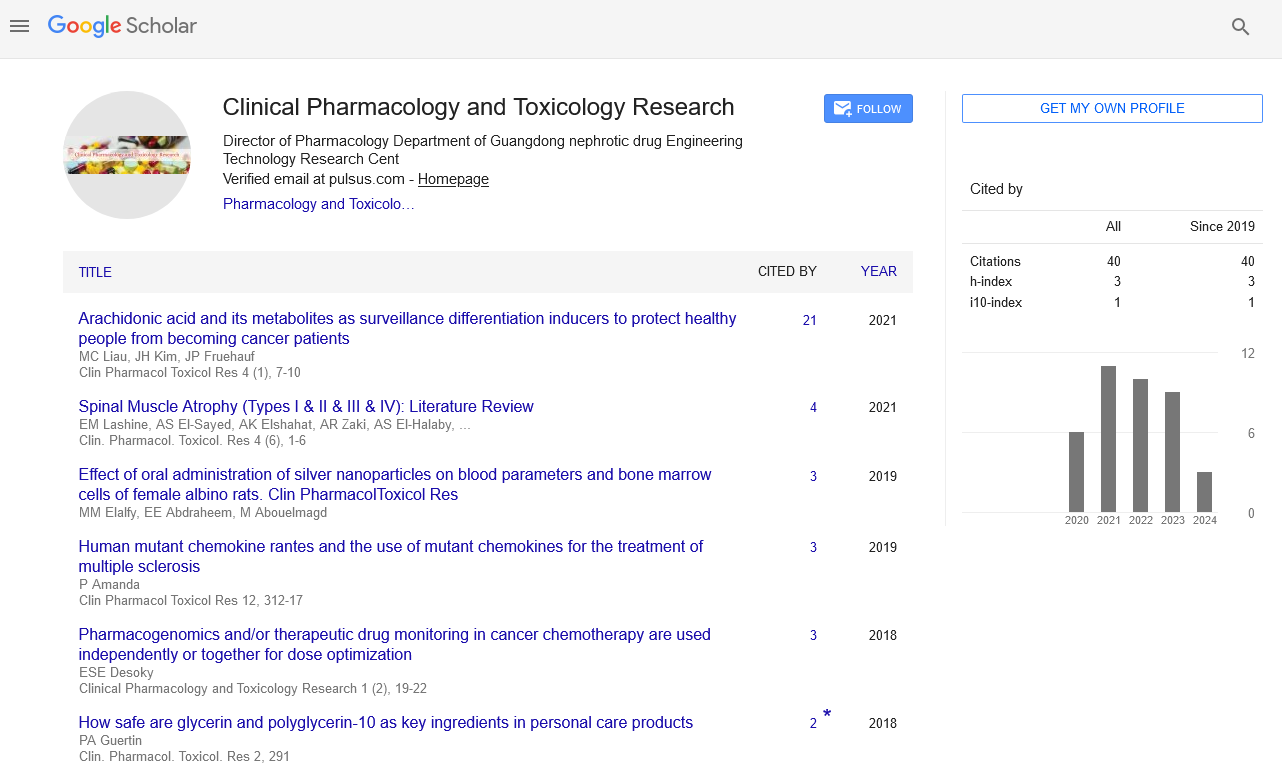Pharmacovigilance-A pharmacological science
Received: 26-Oct-2020 Accepted Date: Nov 09, 2020; Published: 16-Nov-2020
Citation: Larsen F. Pharmacovigilance-A pharmacological science. Clin Pharmacol Toxicol Res. 2020;3(3):3.
This open-access article is distributed under the terms of the Creative Commons Attribution Non-Commercial License (CC BY-NC) (http://creativecommons.org/licenses/by-nc/4.0/), which permits reuse, distribution and reproduction of the article, provided that the original work is properly cited and the reuse is restricted to noncommercial purposes. For commercial reuse, contact reprints@pulsus.com
Introduction
Drugs play a major role in today’s life as many people were suffering from different kinds of diseases and disorders. So the drugs must be kept safe in order to prevent adulteration. The safety of drugs is a much needed process for this. These adulterations can be prevented with the help of Pharmacovigilance studies. And not only the drug safety but by using Pharmacovigilance, the patient’s health can also be protected.
Pharmacovigilance is a kind of pharmacological science which is related to the detection, collection, assessment, monitoring and prevention of adverse effects with pharmaceutical products. Pharmacovigilance is also called as drug safety as it provides safety to drugs without being adulterated. The main process involved in pharmacovigilance is to recognize the adverse effects, toxicology and drug therapies of drugs. Pharmacovigilance also include detecting the overdose and other medication errors, misuse of drugs, abuse of drugs and other adverse drug reactions.
Intuition of Pharmacovigilance
Pharmacovigilance (PV) is used in clinical research studies in the assessment of clinical research. Clinical trials have been done in three stages. The phase-1, phase-2 and phase-3 clinical trials have been done before releasing a drug into market. The drug is released only when it qualifies the three phases of clinical trials. An investigator collects data and analyses it before it was undergone clinical trials [1]. The drug is checked for any side effects. If the effect is normal and not a negative side effect, then the drug is used for clinical trials. The drug information is provided to the pharmaceutical industry in which the trials will be undergone. The information was given to the research and development team of the industry to validate [2]. Then the drug is analyzed and checked whether it is safe to progress to the next phase of clinical trial. Then the drug is assessed completely before releasing into the market as a complete dosage form. Pharmacovigilance mainly focusses on the adverse drug reactions of medicines, raw materials of drugs, and other medical products by protecting the patients and public as well in order to minimize the risk of getting adulterated or affected by them [3].
The constituents of pharmacovigilance include medical coding, reporting to clinical trials and assessment of drugs, signal detection, risk management, pharmacoepidemiology, pharmacogenetics, pharmacogenomics and ecopharmacovigilance. During the clinical trials, the drug is given to a person and is tested for side effects followed by any adverse drug reactions and then checked for withdrawal symptoms if any. Data mining pharmacovigilance databases is one of the most used approaches that have become popular with the availability of extensive data sources and inexpensive computing resources [4].
After completing every test the result will be shown to the research and development team. If any drug was found to be adulterated or causing negative side effects or adverse drug reactions will be detected as unethical or illegal drug formulation. Pharmacovigilance reports were only given by the qualified persons and kept confidential until the final result of the drug is received. Lacking a qualified person will not produce accurate results and are not considered as final reports [5].
REFERENCES
- Gervasini G, Benítez J, Carrillo JA. Pharmacogenetic testing and therapeutic drug monitoring are complementary tools for optimal individualization of drug therapy. Eur J Clin Pharmacol. 2010; 66(8):755-74.
- Ceppa F, Fontan E, Cremades S, et al. Role of pharmacogenetics in chemotherapy of colorectal cancers. Rev Med Interne. 2007; 28(9):594-02.
- Collin LJ, Cronin-Fenton DP, Ahern TP, et al. Cohort Profile: The Predictors of Breast Cancer Recurrence (ProBe CaRE) Premenopausal Breast Cancer Cohort Study in Denmark. BMJ Open. 2018; 8(7):e021805.
- Lee SHR, Yang JJ. Pharmacogenomics in acute lymphoblastic leukemia. Best Pract Res Clin Haematol. 2017; 30(3):229-36.
- Chantry AS, Quaranta S, Ciccolini J, et al. Clinical application, limits and perspectives of pharmacogenetic and pharmacokinetic analysis of anticancer drugs. Ann Biol Clin. 2014; 72(5):527-42.





